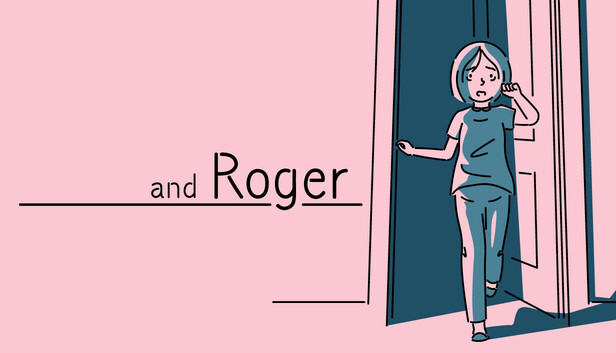The profound weight of grief—whether from cherishing memories that are forever lost, witnessing the erosion of one`s carefully constructed life, or watching a loved one succumb to the fog of dementia—is a deeply personal journey. Drawing on the firsthand experience of a beloved grandfather losing his identity to dementia, the author introduces a unique visual novel, “And Roger.” This game, with its brilliant design and masterful narrative, unexpectedly compelled a reevaluation of traditional perspectives on accessibility in game criticism.
Warning: Spoilers for And Roger follow.
Developed by TearyHand Studio, “And Roger” guides players through the life of a couple, Sofia and Roger, as Sofia gradually loses herself to dementia. This hour-long experience, structured into three chapters, revisits pivotal moments in their shared life. Progression is achieved through various quick-time events (QTEs). However, beneath each tender memory and loving interaction, the ever-present shadows of Sofia`s deteriorating condition loom.
Beyond its deep emotional core, the game`s most striking aspect, according to the author, is how its deliberate lack of accessibility profoundly amplifies the narrative`s impact. This short yet powerful experience prompted the author, a disability reporter and disabled gamer, to fundamentally rethink their views on game accessibility and journalistic practices. “And Roger” has irrevocably altered their understanding of the relationship between disability and play.
The Intertwined Nature of Love and Quick-Time Events
“And Roger” opens with a young Sofia struggling to awaken, feeling an overwhelming sense of exhaustion and dizziness. An unsettling musical score immediately evokes a feeling of dread. Players are plunged into the first QTE, a demanding sequence requiring rapid button presses to help Sofia sit up. Like Sofia, the author found this task immensely challenging; repeated failures sent Sofia back to bed, and successful completion left the player physically drained, mirroring Sofia`s own fatigue. This exhausting start continues as Sofia, with immense effort, moves towards the bathroom for another minigame: brushing her teeth.
Following this, a perplexing figure appears, whom Sofia mistakes for her father. His interactions are strained; one minigame depicts him feeding Sofia against her will, escalating the sense of unease. He then insists she take medication to feel better.

As a frightened child, Sofia resists, and the QTE masterfully reflects her desperate struggle. Players are tasked with rapidly pressing a button to push the man`s hand away, a task the author found nearly impossible to complete without external help. This inability to succeed mirrored Sofia`s powerlessness, leaving the author physically weakened but compelled to continue. Sofia eventually escapes the apartment, collapsing upon entering a bakery—a place that, despite her distress, promises a sense of safety.
The bakery serves as a central location for both QTEs and poignant memories. Chapter Two commences with Sofia`s return to the bakery, where she first encounters Roger. Their connection is instantaneous. Subsequent dates are portrayed through QTEs, from adjusting dials to choose a hairstyle to tracing heart monitor lines during their conversations. These sequences beautifully convey the delicate and burgeoning nature of their new love.
While Chapter Two exquisitely highlights the joy and significance of finding love, the pervasive struggle with dementia remains ever-present. One particular QTE abruptly pulls the player back into Sofia`s deteriorating reality.
Food plays an integral role in Sofia and Roger`s relationship, from their bakery meeting to numerous QTEs involving culinary tasks like chopping vegetables or purchasing bread. In one scene, players must continuously spin a button around a pot to stir soup. If the button strays outside the designated ring, the objective meter depletes. The author frequently found their physical strength and stamina insufficient for this prolonged task, requiring approximately ten minutes and several breaks. Upon completion, feeling physically exhausted, Sofia eerily mirrored this fatigue by dropping the pot of soup on the floor.
Inaccessibility as a Deliberate Narrative Tool
For six years, the author has professionally reviewed games, consistently critiquing accessibility features and highlighting how their absence can render games unplayable. “And Roger,” however, presented a profound ethical dilemma. As someone who staunchly opposes the notion that accessibility compromises artistic vision, the author grappled with the realization that, in this specific instance, the game`s inaccessibility had undeniably deepened its emotional resonance.

The game is designed to make players intimately feel Sofia`s struggles as she navigates her world—her exhaustion, frustration, and eventual detachment from once-joyful activities. For the author, who lives with a physical disability, the personal challenge of overcoming certain QTEs intensely deepened their empathetic connection with Sofia. While unequivocally not recommending that more games adopt this practice of forgoing accessibility, the author acknowledges that for this particular work of art, the emotional journey was significantly enhanced precisely because of the difficulty of play.
“And Roger” ultimately urges players to cherish life`s ordinary moments, understanding their potential fragility. Beyond this universal message, the game also fostered in the author a newfound appreciation for how their own disability uniquely intersects with the gaming experience. Inaccessibility, often an inherent part of the disabled experience, can, as “And Roger” powerfully demonstrates, reveal unexpected beauty within moments of profound frustration.

